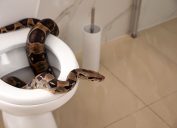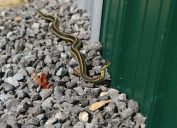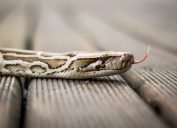A Venomous Snake Bit a Man at His Home—Here's Where It Was Hiding
This poisonous reptile is a relatively common sight in parts of the U.S.
Even though it may be designed and manicured to your tastes, your home's yard is a part of nature and can be filled with all kinds of visitors. In some areas, this can mean that poisonous snakes will make their way onto your property from time to time, even if you're taking steps to make your lawn less inviting for them. And, despite the fact most people know to be aware of their surroundings so they can avoid getting too close to the reptiles, snakes' excellent camouflaging abilities can sometimes make it difficult to notice them until it's too late. In one recent case, a venomous snake bit a Tennessee man on his property during a close encounter. Read on to see where the reptile was hiding when the accident occurred.
READ THIS NEXT: How a Snake Can Get Into Your Home Through Your Toilet.
The man was bitten by a snake relatively common in parts of the U.S.
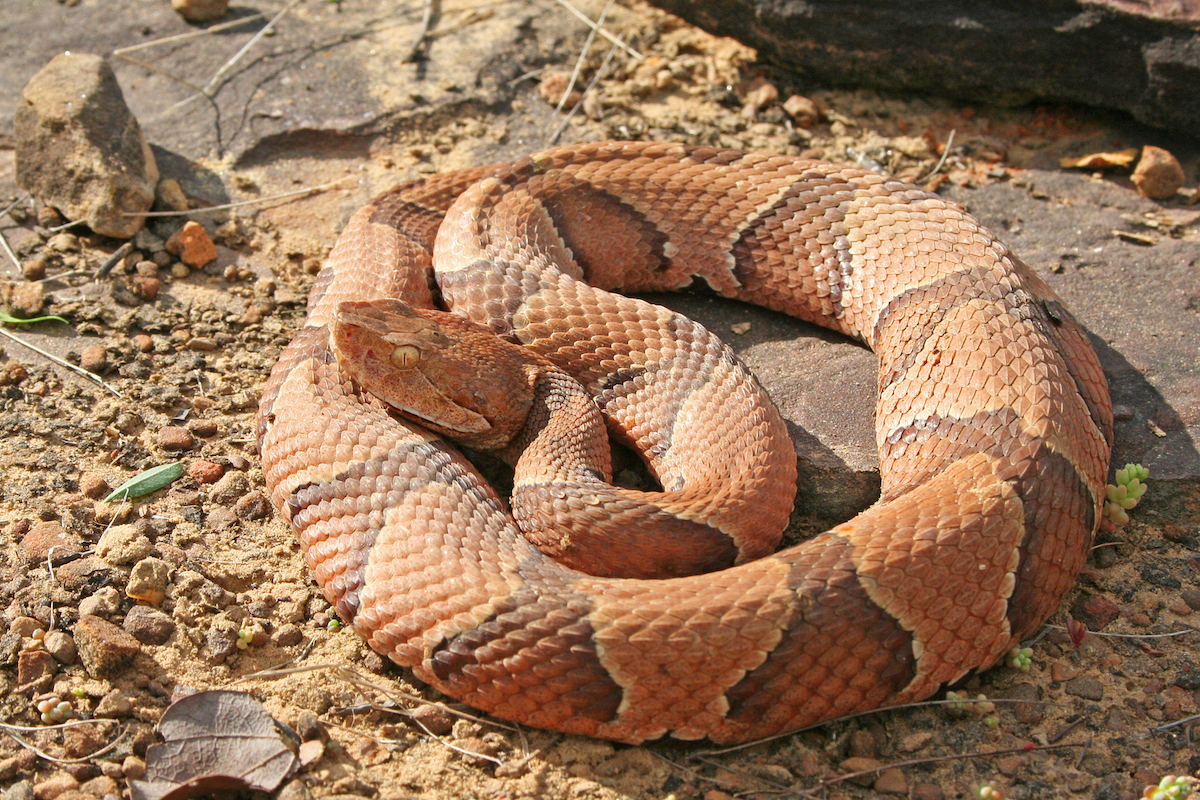
On June 18, a copperhead snake bit Jeffrey Wilkins at his home in Monroe County, Tennessee, local ABC affiliate WATE reported. The venomous reptile is one of the nearly 40 types of poisonous snakes in the U.S. and is a relatively common sight where the accident occurred. According to the Virginia Herpetological Society, copperheads have a vast habitat in the U.S. that spreads throughout the Southeast and Mid-Atlantic regions, expanding into the Midwest and the fringes of New England in an area that covers more than two dozen states.
Unaggressive creatures by nature, copperheads have a distinct brown-and-tan color pattern that runs along their spine and can make them very difficult to notice in areas such as leaf piles or brush, where they often like to hide for long periods of time. Run-ins occasionally occur when they're accidentally disturbed during yard work, including the recent case of a five-year-old in Texas who was bitten by one while picking up leaves in his yard with his uncle, according to the Fort Worth Star-Telegram.
After hibernating during the winter months, copperheads are often seen out and about during daylight hours in the spring and fall and become nocturnal during summer, according to the Ohio Public Library Information Network. And while they're most likely to hide out in rock or wood piles, they've adapted to living in the altered habitats of suburbs and some cities, making them regular visitors to lawns and yards in some areas, per LiveScience.
Wilkins says the copperhead took him by surprise.
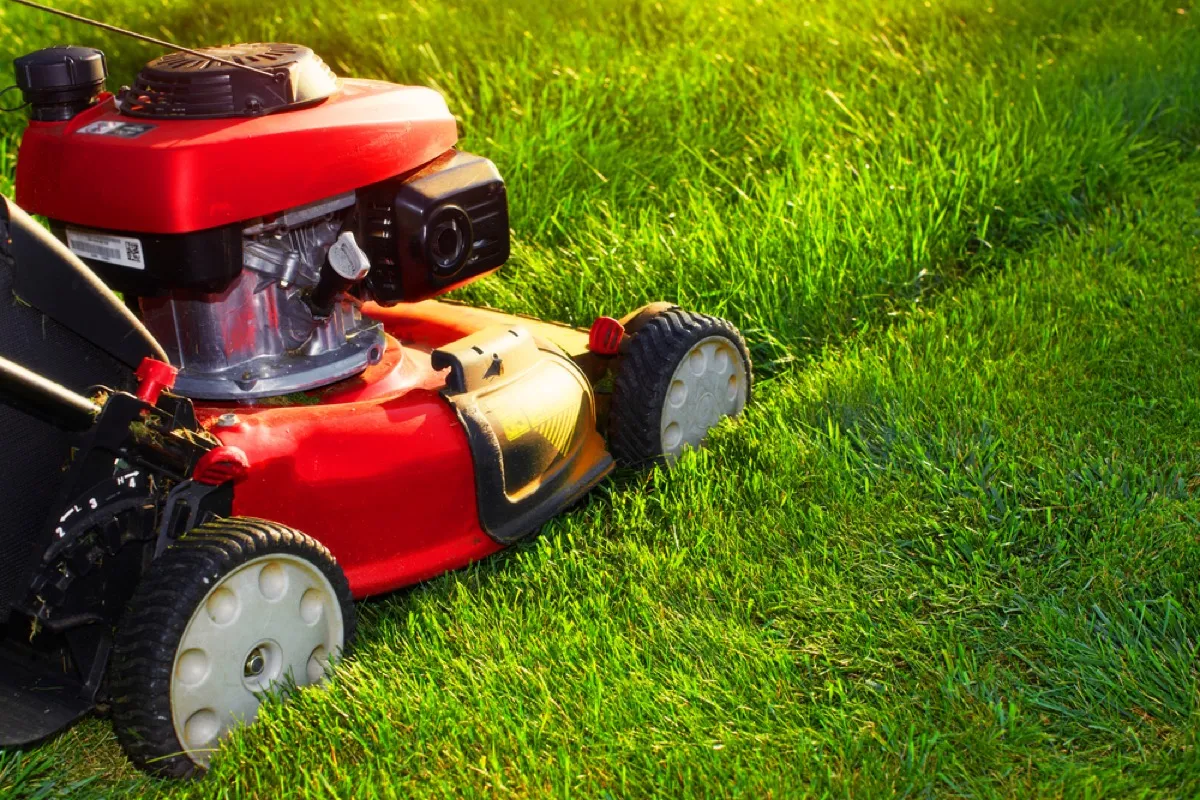
Wilkins said his encounter came as a surprise after he spent the day performing basic yard work, cutting down tall grass, as reported by WATE. "I mowed my yard Saturday morning at about 10 o'clock. Everything was a smooth, nice day," he said.
Wilkins explained that he later went to check whether he had locked his front gate before heading inside for the evening. But after closing the entrance and turning around to walk back into his home, he just managed to catch sight of a copperhead on the ground before it struck and bit him in the leg.
"I turned about right here and took maybe two-step and it laid right here, and that's when it got me," he told WATE.
For more pest warnings sent right to your inbox, sign up for our daily newsletter.
Despite the bite being intensely painful, Wilkins says he's recovering.

According to WATE, Wilkins said the pain from the snake's bite was so intense that he fell to the ground and had to call for his wife. But after a trip to the emergency room, he's making an excellent recovery.
"I don't need anti-venom, which is a good thing," Wilkins told the news station. "The snake shot just very little venom in me," adding that his "leg just feels like [he's] slept on it for four or five days now."
Now, Wilkins says he's being extra cautious when crossing his lawn. "I watch my step even more. I always watch my step, but now I'm just really afraid," he said.
Here's what you should and shouldn't do if a poisonous snake ever bites you.

If you ever follow too closely in Wilkins' footsteps, you should call 911 and seek medical assistance at a hospital right away after any venomous snake bites you, Spencer Greene, director of toxicology at HCA Houston Healthcare-Kingwood in Texas, advises. You can also help protect the wound by immediately removing any restrictive clothing or jewelry from the affected area and elevating the extremity above your heart while waiting to be seen by doctors.
If you can do so safely, Greene also suggests taking a picture of the snake so physicians can get an idea of whether or not the reptile is poisonous or not. But despite popular belief, it's essential to avoid any debunked home remedies that could worsen the injury, including applying tourniquets, "cut and suck" techniques, electrical stimulation, or packing the bitten area in ice, per The Washington Post.
READ THIS NEXT: The No. 1 Sign There's a Snake in Your Bathroom.

